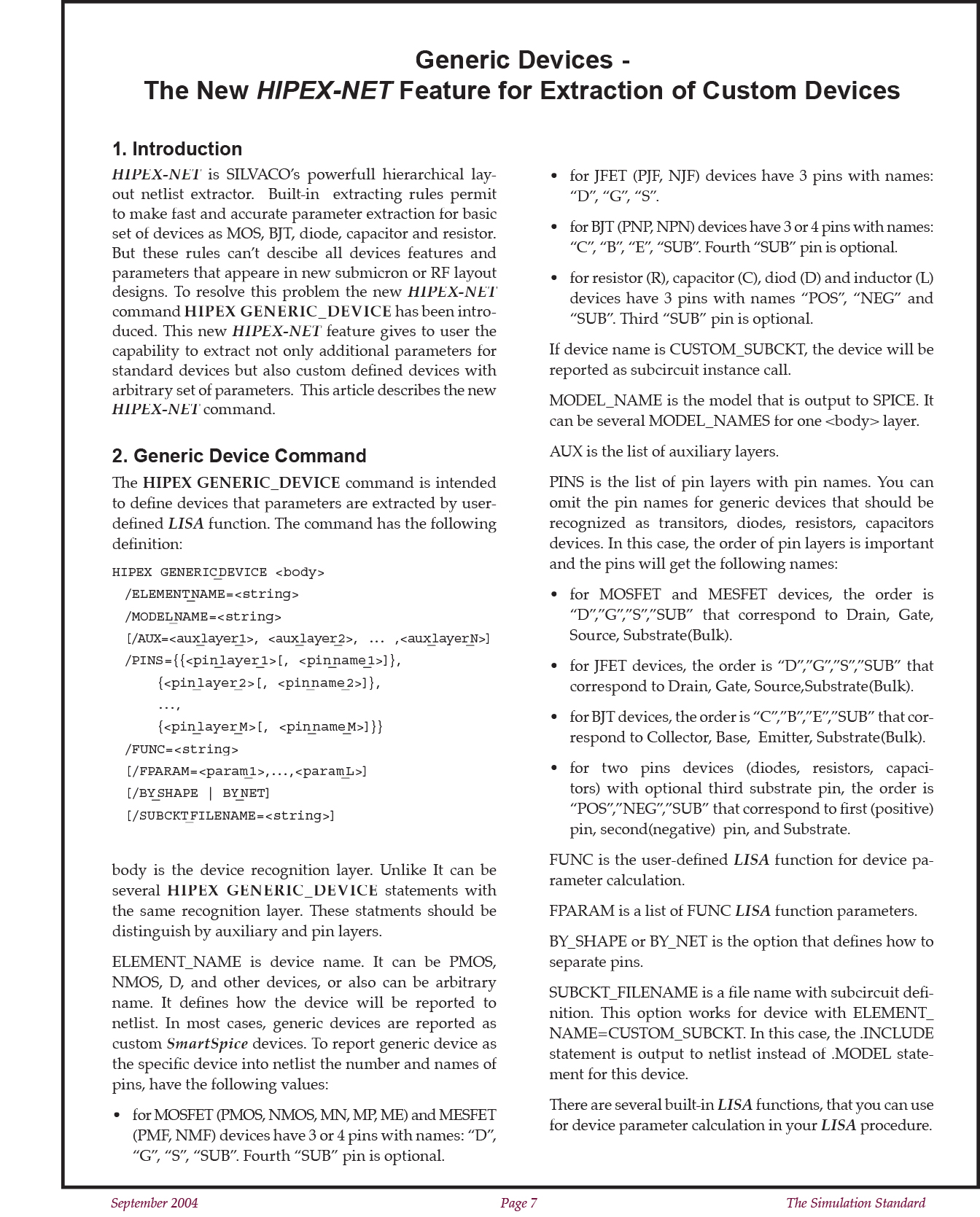Generic Devices – The New HIPEX-NET Feature for Extraction of Custom Devices
1. Introduction
Hipex-NET is SILVACO’s powerfull hierarchical layout netlist extractor. Built-in extracting rules permit to make fast and accurate parameter extraction for basic set of devices as MOS, BJT, diode, capacitor and resistor. But these rules can’t descibe all devices features and parameters that appeare in new submicron or RF layout designs. To resolve this problem the new HIPEX-NET command HIPEX GENERIC_DEVICE has been introduced. This new HIPEX-NET feature gives to user the capability to extract not only additional parameters for standard devices but also custom defined devices with arbitrary set of parameters. This article describes the new HIPEX-NET command.
2. Generic Device Command
The HIPEX GENERIC_DEVICE command is intended to define devices that parameters are extracted by user-defined LISA function. The command has the following definition:
HIPEX GENERIC_DEVICE
/ELEMENT_NAME=/MODEL_NAME=
[/AUX=, , … ,]
/PINS={{[, ]},
{[, ]},
…,
{[, ]}}
/FUNC=[/FPARAM=,…,]
[/BY_SHAPE | BY_NET]
[/SUBCKT_FILENAME=]
body is the device recognition layer. Unlike It can be several HIPEX GENERIC_DEVICE statements with the same recognition layer. These statments should be distinguish by auxiliary and pin layers.
ELEMENT_NAME is device name. It can be PMOS, NMOS, D, and other devices, or also can be arbitrary name. It defines how the device will be reported to netlist. In most cases, generic devices are reported as custom SmartSpice devices. To report generic device as the specific device into netlist the number and names of pins, have the following values:
- for MOSFET (PMOS, NMOS, MN, MP, ME) and MESFET (PMF, NMF) devices have 3 or 4 pins with names: “D”, “G”, “S”, “SUB”. Fourth “SUB” pin is optional.
- for JFET (PJF, NJF) devices have 3 pins with names: “D”, “G”, “S”.
- for BJT (PNP, NPN) devices have 3 or 4 pins with names: “C”, “B”, “E”, “SUB”. Fourth “SUB” pin is optional.
- for resistor (R), capacitor (C), diod (D) and inductor (L) devices have 3 pins with names “POS”, “NEG” and “SUB”. Third “SUB” pin is optional.
If device name is CUSTOM_SUBCKT, the device will be reported as subcircuit instance call.
MODEL_NAME is the model that is output to SPICE. It can be several MODEL_NAMES for one layer.
AUX is the list of auxiliary layers.



